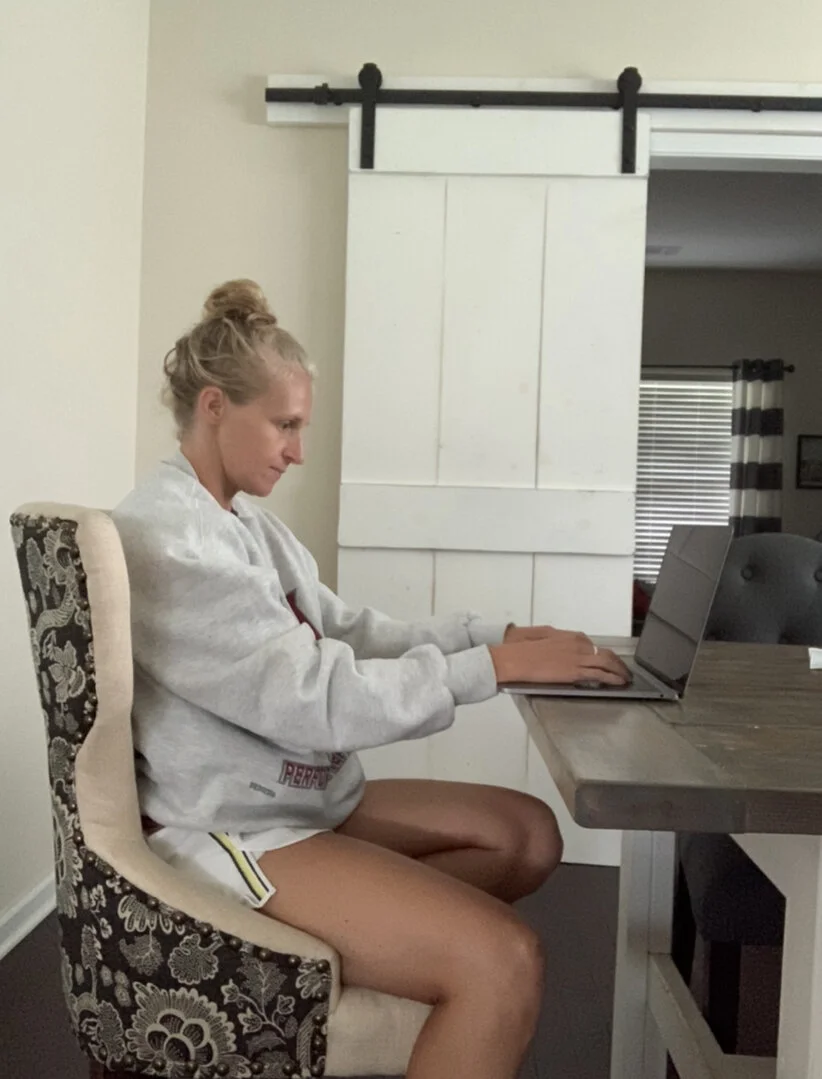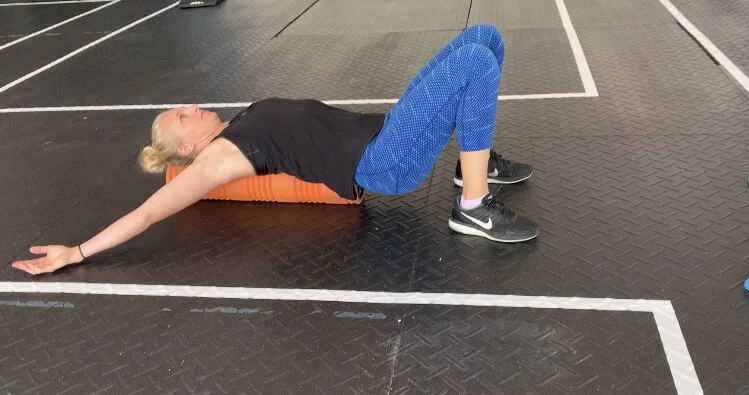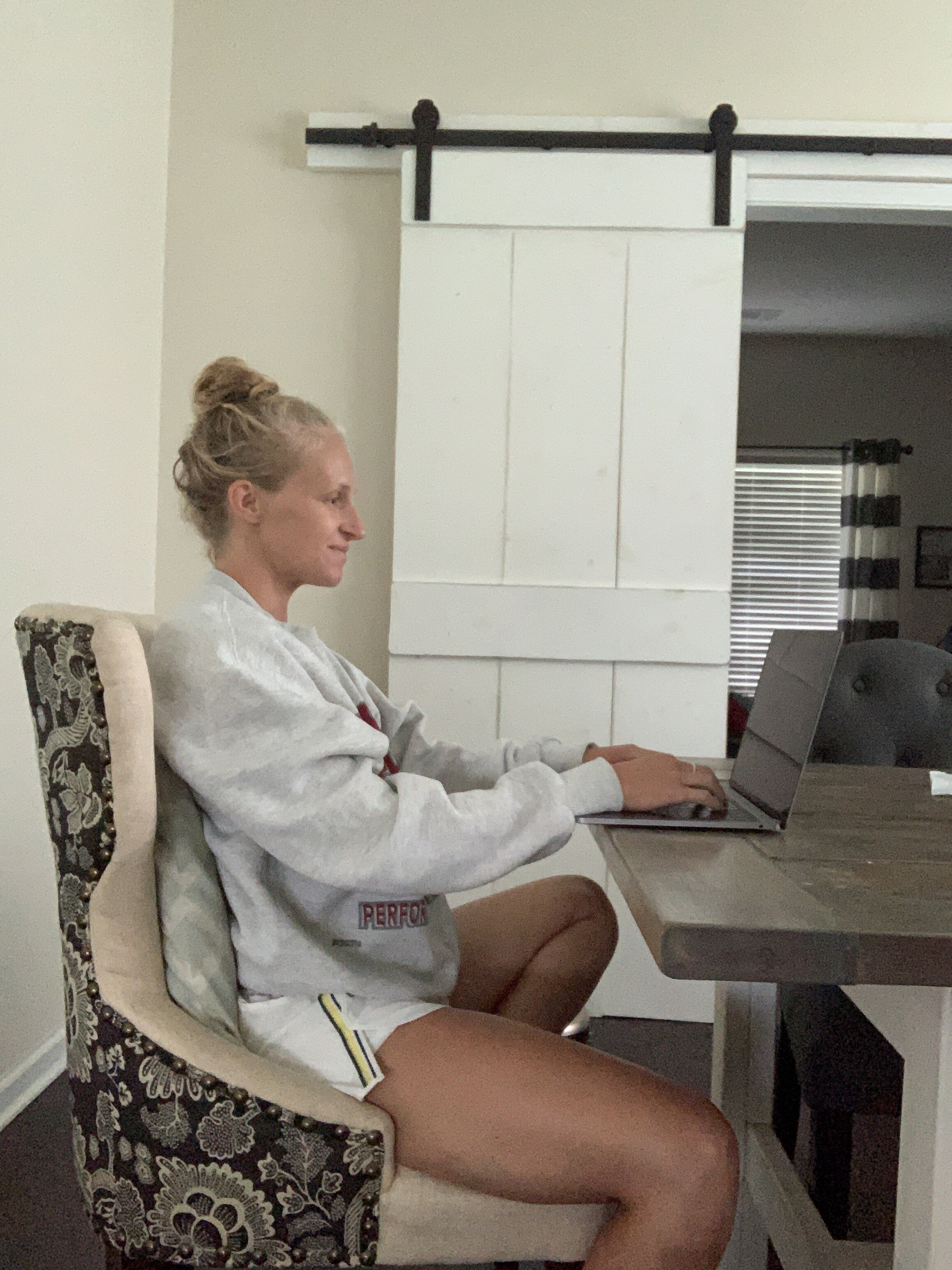It goes without saying the COVID-19 has flipped our lives upside-down in several ways. For many people who used to go into an office everyday for work, you are now working at home for part of or a majority of the time. I have friends who love this as they now find that their day is more flexible and they are able to avoid some of the office “politics.” Others miss the friendships and have a hard time concentrating at home with kids running around or other projects (like laundry) glaring at them. However your feel about it, you are likely having to integrate a “work station” in your home right now that you may not have had before. So, how have your neck and shoulders been feeling lately? Have you had some back pain creep in that had not been there before? Some of this may be due to poor postural control in your new environment. Here are a few easy ways to correct your posture and help you feel great at the workplace:
Correct The “Swan Neck”
In the first photo, notice the shoulders rounded forward, neck jacked backwards so that you’re facing your screen. This position crams the joints in the back of your neck especially at the base of your head and where the back of your neck meets your upper back. This is one of the reasons you may have headaches after being on your screen too long! This position also shortens the pec muscles in the front of the chest, stretches out the muscles that stabilize your shoulders in the back, setting you up shoulder pain, impingement syndrome, etc. Instead, Instead, use your knees to support your arms to take strain off your upper back and shoulders if you are sitting on the floor or on the bed. Sit upright, allowing your neck to keep it’s nice neutral “S” shape and taking pressure of the joints. You can do the same thing sitting in a chair, making sure to rest your forearms on the desk or table while you work. When sitting on the couch, put a pillow in your lap to support your electronic device, or use a lap desk.
Poor posture puts compression on your cervical spine causing neck pain, shoulder pain, and headaches
2. Correct the Hunchback
Okay so your joints in your neck aren’t crammed down, but now you’re neck muscles are on over drive trying to hover your head over your screen. The shoulders are still rounded forward, and now the rest of the back is rounded as well which is going to affect your lower back. In this rounded position, you are putting more pressure on your sacrum (that triangle bone at the bottom of your spine) which can push it at an angle to put more stress on your lower back, your SI joint, and your hips. Instead, try laying on your back and use a pillow or roller behind your arms to help give it support while you are looking at your screen. This way your neck muscles are relaxed, and your spine is in a more neutral position.
3. Legs up on the wall
One of my favorite ways to decompress! When you are working in the office or at home, it is important to change positions frequently. At least every 60-90 minutes, get up and move or change positions. I like using this legs up on the wall technique because it stretching out your hamstrings by extending your knees out straight. When we sit in a chair or in the car with our knees bent for a long time, it sets the hamstrings up for getting short and tight so open those babies up! I also have a craniocradle underneath the base of my head to decompress my neck and give those muscles at the top part of my neck a little release. Lastly, this is an inversion technique. (feet above the head), that helps to calm and destress your body by tapping into the parasympathetic nervous system, giving you a mental break before going back at it with more focus.
Legs up the Wall
Relax for 5 mins
4. Opening the Chest
Another way to get out of that “on the computer” posture, is to open up the chest and allow those pectoral muscles in front of the shoulders to stretch open. One way you can do this is to get out a foam roller and lay your head and upper back on it so that it is faced going down your back longways. Keep your knees bent and your feet on the floor as to not stress your lower back out, then lay your arms open out to the sides. Play around the the angle of your arms by moving them in s snow angel pattern, up towards your head and then back down to a “T”. Do you notice any tight spots along the way? Hold your arms there and allow gravity to sink into the stretch. If you feel any tingling in your fingers, try making a loose fist while you do this, otherwise bend at the elbows slightly to take some of the tension off of your nerves. Relax into the stretch up to 5 mins. Don’t have a foam roller? No problem just take a bath towel or sweatshirt and roll into up to use the same way!
Chest opener
Relax 2-5 mins as tolerated
5. Pillow behind the back
Last, but not least, a simple pillow behind your back can go a long ways! Without any lumbar (lower back) support, we tend to sink into a position called “sacral sitting” in which our bottoms are scooted forward on our chairs and our lower back rounds out. This causes strain on the ligaments that support your lower back while also putting an uncomfortable pressure on your sacral bone! Instead, grab yourself a throw pillow or rolled up sweatshirt and place it between your lower back and your chair. Sit upright with your back against the chair and allow that pillow to help you keep that “S” shape in your spine while you work!
Dr. Ashley Romine, DPT
Owner / Physical Therapist
Athlete’s Mechanic, LLC
Are you struggling with neck and shoulder pain you just can’t seem to get rid of? Get to the root of the problem by scheduling an evaluation today!










